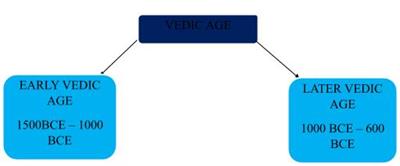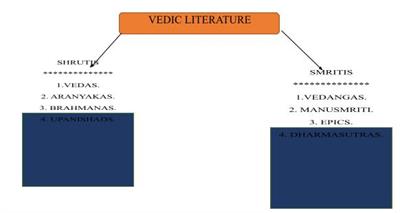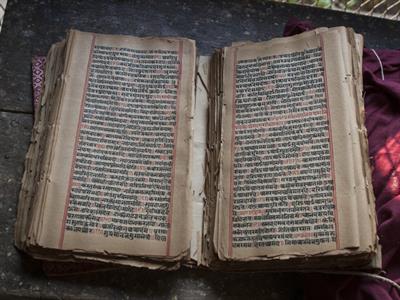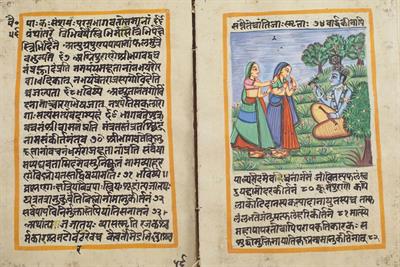PDF chapter test TRY NOW
Vedic Age – An Overview
- The Birth of the Vedic age began during the declining stage of the Indus Valley Civilisation. The name of this age was derived from the “Vedas” which played an important role in shaping this period’s thoughts and social structure.
- There are four Vedas, namely “Rig Veda, Yajur Veda, Sama Veda, and Atharvana Veda.
- Among the Vedas, Rig Veda is more significant because the information it contained regarding the Vedic Period was not found in other contemporary texts.
- The Vedic age is a period from 1500\ BCE – 600\ BCE, which can be split into two timeframes.

- The Vedic age was inhabited mainly by a group of people, namely Aryans, who colonised the area and exerted their dominance.
The Aryan Invasion:
- The Aryans belong to Central Asia, who have entered India through the Khyber Pass located in the Afghan – Pakistan border.
- Early Aryans are Semi-nomadic pastoral communities who spoke Indo – European languages and settled in the North-Western part of India during the early Vedic period. The area which they settled is known as “Saptasindhu”.
SAPTASINDHU: The area acquired its name from the seven rivers that are flowing in that plains. Jhelum, Ravi, Beas, Sutlej, Indus, Saraswathi and Chenab drains the plains hence the name “Saptasindhu or the Land of Seven Rivers”. (This place is located in modern-day Punjab).
- The Aryans practised pastoral activities, which were considered as their main occupation, and they had huge respect for their cattle which was seen as their wealth.

- After settling in Indo-Gangetic plains, they picked up Slash and Burn Agriculture method, where they used ploughs and axes made of Iron.
- Aryans became dominant compared to the natives as they possessed Chariots driven by horses and arms that were highly advanced.
SLASH AND BURN AGRICULTURE: This method involves the felling and burning trees of a particular area, where the burned ashes are used as natural fertilisers. The people started cultivation in other areas and allowed the land for self–reclamation.
Sources for the Study of Vedic Age:
- Various sources contain volumes of information about the Vedic age and its culture. Among the numerous sources available, the Vedic literature holds a lot of details about the Vedic age.
- The Vedic literature is divide into two parts: Shruti (to hear/ listening) and Smritis (Written documents).

The Shrutis (acquiring knowledge through hearing):
1.Vedas
The word Veda is derived from the root word “Vid” meaning “to know or superior Knowledge”. It contains four Vedas, namely,
- Rig Veda: Considered as the oldest of the Vedas, which contains 1028 hymns written in 10 books about various gods. Books 2-7 are known as family books.
- Yajur Veda: Speaks about the rules that are to be followed in a socio-political life.
- Sama Veda: It is known as the Books of Chants or Music, containing 1810 hymns.
- Atharvana Veda: Also Known as the Book of Magical and Mystical spells, which also speaks about medicine.

The Rig Vedic text
2. Aranyakas
These are part of Brahmans and are present in the final parts of the texts. Aranyakas are also known as “Forest books”.
3. Brahmanas
These are literary sources that speak about the sacrifices and prayers. Tandyamaha Brahmana is considered to be the oldest among the Brahmanas.
VRYTYASOMA: This is a ceremonial feature mentioned in the Brahmanas by which the non- Aryan people are converted into Aryans.
4. Upanishads
Upanishad means “to sit near someone”. These are philosophical texts that deal with the soul of the human, and contain 108 texts; among these, the “Chandogya and Brihadarnayaka are the oldest ones”.
It is also known as Vedangas (end of Vedas) as it denotes the final phase of the early Vedic period.
It is also known as Vedangas (end of Vedas) as it denotes the final phase of the early Vedic period.
SATYAMEVA JAYATE: This phrase found in India’s national emblem has been derived from “Mundaka Upanishad”.
The Smritis: (acquiring knowledge through written texts).
The Period in which the Smritis wrote is considered the period that witnessed the art of documenting various literary sources. It also explains the rules that are to be followed by the Vedic people.
1.Vedangas
Vedangas are philosophies dealing with daily life.They contain six philosophies namely,
- Shiksha – speaks about pronunciation
- Kalpa – speaks about rituals
- Chanda – speaks about metrics
- Vyakarna – speaks about grammar
- Jyotishya – speaks about astronomy
- Nirukta – speaks about phonetics
2. Manusmriti
These texts speak about the laws of the land that laid procedures that are to be followed while dealing with various problems, considered the oldest written text on laws. It was written by a sage named “Manu”.
3. Epics
The Smritis witnessed the rise of two great epics of Indian literature, namely,

Ancient Ramayana text
Important!
Ramayana – Written by Maharishi Valmiki around 5\ BC.
Mahabaratha – Written by Maharishi Vyasa around 70\ BC – 4\ AD.
Mahabaratha – Written by Maharishi Vyasa around 70\ BC – 4\ AD.
4. Dharmasutras
Archaeological remains
Reference:
The Rig Vedic text - bodom / Shutterstock.com
Reference:
Ancient Ramayana text - steve estvanik / Shutterstock.com
